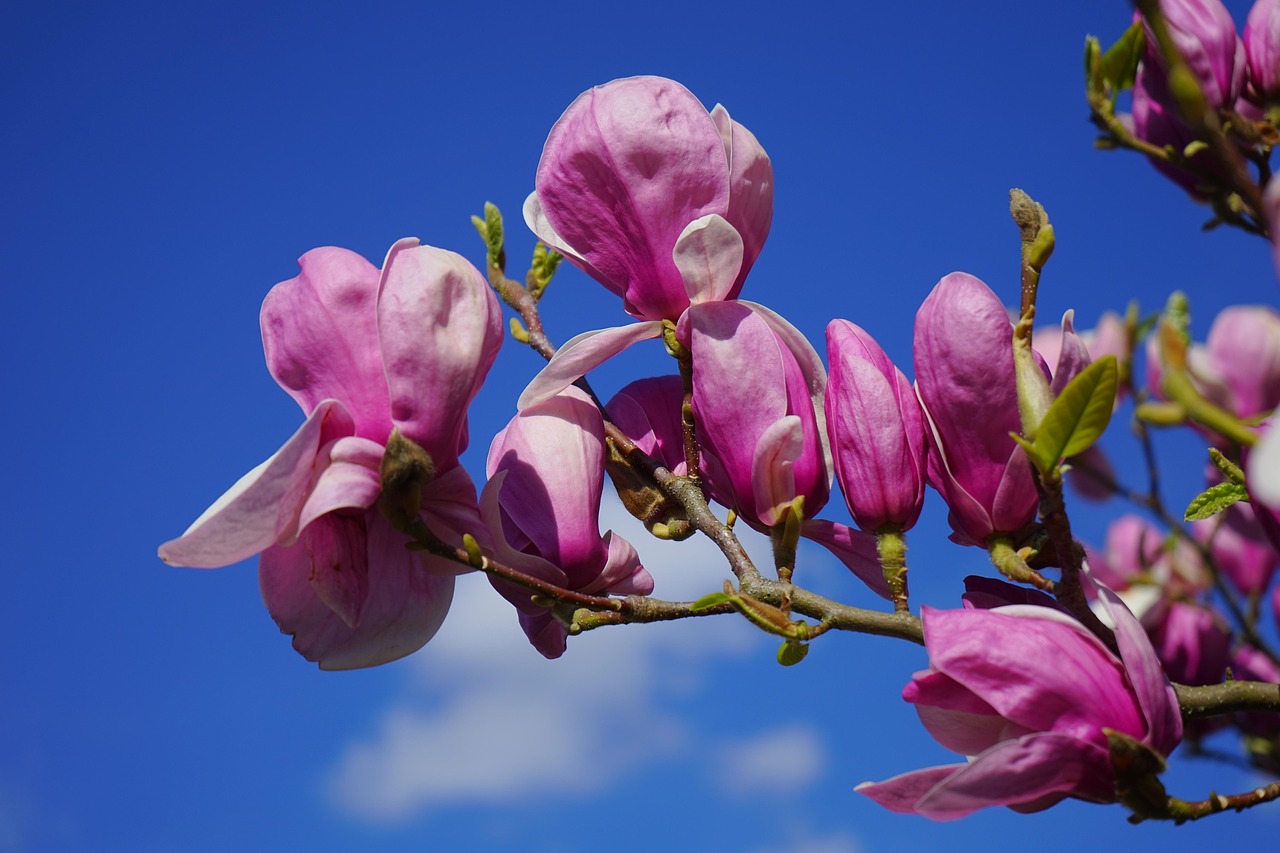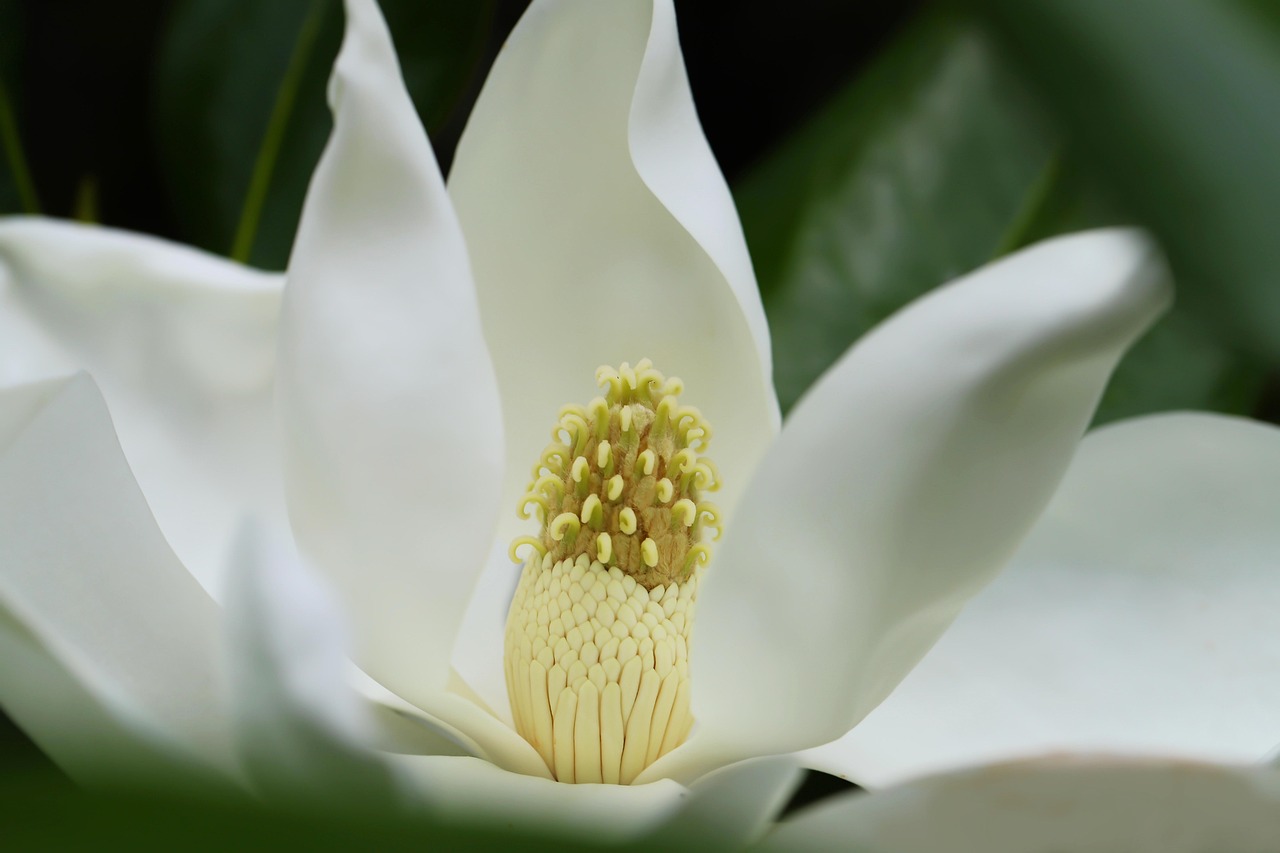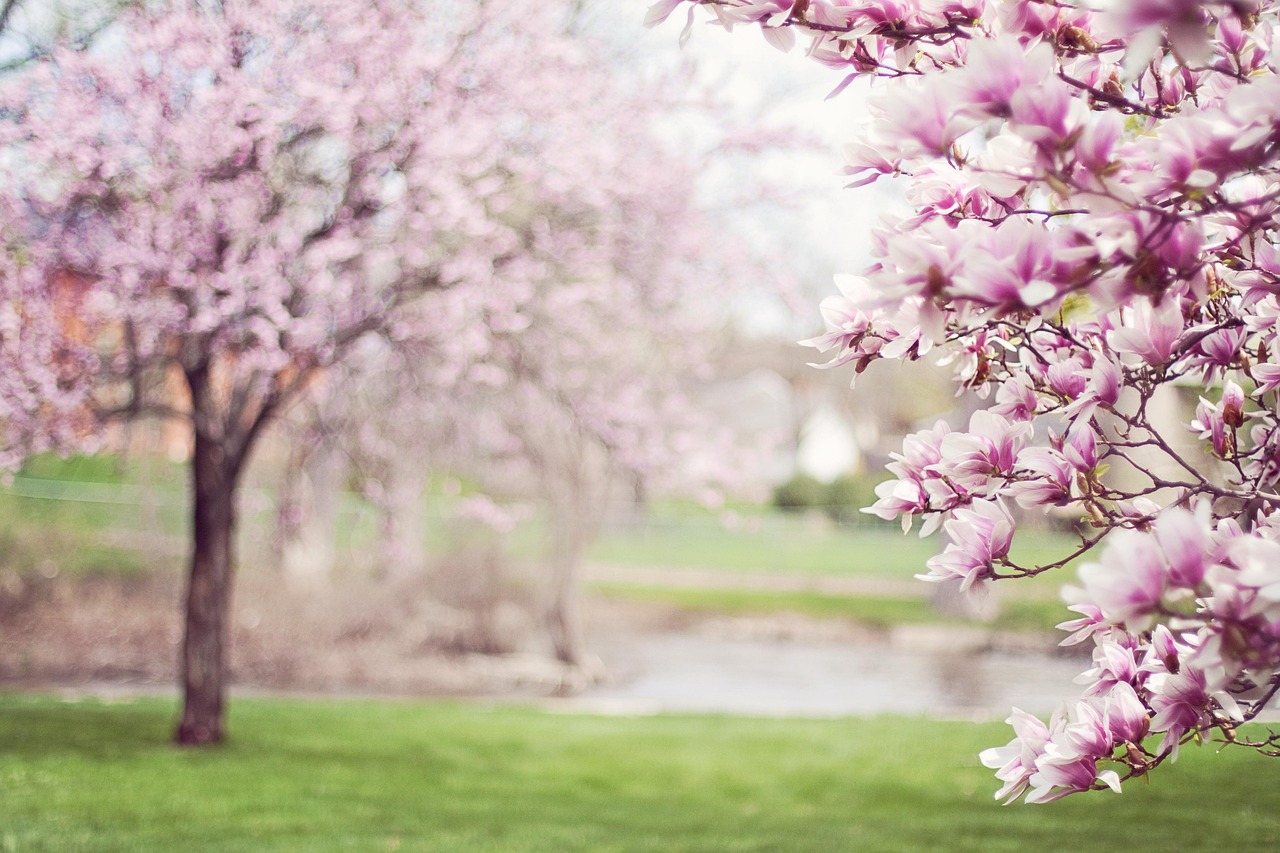Magnolia trees can be either deciduous or evergreen, depending on the species. Deciduous magnolias shed their leaves in the fall, while evergreen varieties retain their foliage throughout the year. Understanding these differences is key to appreciating the diverse traits of magnolia trees.
Introduction to Magnolia Trees

Magnolia trees belong to the Magnoliaceae family and are known for their stunning flowers and unique foliage. They are native to various regions around the world, particularly in Asia and the Americas. These trees are often prized for their ornamental value, making them popular choices for gardens and landscapes.
One of the most fascinating aspects of magnolia trees is their diversity. There are over 200 species of magnolia, which can be broadly categorized into two groups: deciduous and evergreen. Each group has distinct characteristics that contribute to their beauty and adaptability in different climates.
Deciduous vs. Evergreen Magnolias
To better understand the differences between deciduous and evergreen magnolias, it is essential to explore their traits. Deciduous magnolias typically lose their leaves in the fall, entering a dormant phase during the winter months. This adaptation helps them conserve energy and water during colder seasons.
In contrast, evergreen magnolias retain their leaves throughout the year. These trees are especially valued in warmer climates where the foliage provides year-round greenery and shelter for wildlife. Here are some key differences between these two types:
| Feature | Deciduous Magnolias | Evergreen Magnolias |
|---|---|---|
| Leaf Retention | Sheds leaves in fall | Keeps leaves year-round |
| Flowering Season | Spring blooming | Spring and summer blooming |
| Climate Preference | Thrives in temperate zones | Prefers warmer climates |
| Examples | Magnolia stellata, Magnolia x soulangeana | Magnolia grandiflora, Magnolia virginiana |
Key Traits of Deciduous Magnolias
Deciduous magnolias are known for their spectacular flowers that bloom before the leaves emerge in spring. The blossoms can be large and fragrant, drawing attention and admiration from gardeners and passersby alike. Some notable traits include:
- Flower Color: They can feature shades of white, pink, purple, or yellow.
- Leaf Shape: Leaves are typically broad and can have a glossy appearance.
- Growth Habit: Many deciduous magnolias have an upright growth pattern, making them suitable for small spaces.
- Height: They can range from small shrubs to tall trees, with some species reaching heights of up to 30 feet.
- Dormancy: They enter a dormant phase in winter, allowing them to survive cold temperatures.
Key Traits of Evergreen Magnolias
Evergreen magnolias offer a different set of benefits. Their year-round foliage provides continuous beauty and shade in gardens. Key traits of evergreen magnolias include:
- Dense Foliage: Their leaves are thick and leathery, providing protection against harsh weather.
- Flowering: While they do flower primarily in spring and summer, some species may bloom sporadically throughout the year.
- Tolerance: They can tolerate a range of soil types but prefer well-drained conditions.
- Height: Many evergreen magnolias can grow quite large, with some reaching heights of over 80 feet.
- Cultural Significance: They are often used as shade trees or privacy screens due to their dense growth habit.
The Importance of Understanding Magnolia Types
Recognizing whether a magnolia tree is deciduous or evergreen is crucial for proper care and maintenance. For gardeners, this knowledge helps in planning landscape designs that consider seasonal changes. Additionally, understanding the specific needs of each type can lead to healthier trees and more vibrant blooms.
The choice between planting a deciduous or evergreen magnolia may depend on personal preferences, climate conditions, and intended landscape use. By selecting the right type, gardeners can enhance their outdoor spaces with magnificent color and texture throughout the year.
In summary, magnolia trees present a variety of options for homeowners and landscape designers alike. Whether you prefer the seasonal display of deciduous varieties or the consistent beauty of evergreens, there is a magnolia tree that can fit your needs. Exploring these traits not only adds aesthetic value but also enriches our understanding of these remarkable trees.
Growing Conditions for Magnolia Trees
Magnolia trees thrive in specific growing conditions, which can vary between deciduous and evergreen species. Understanding these conditions is essential for successful cultivation. Here are the critical factors that affect the growth of magnolia trees:
Soil Requirements
Magnolias prefer well-drained, rich soils that retain moisture without becoming waterlogged. The ideal soil pH is slightly acidic to neutral. Here are some characteristics of suitable soil:
- Loamy Texture: A mix of sand, silt, and clay is preferred for optimal drainage and nutrient uptake.
- Organic Matter: Adding compost or well-rotted manure can improve soil fertility and moisture retention.
- Avoid Compacted Soil: Compacted soil limits root growth and water absorption, so it should be loosened before planting.
Sunlight Requirements
Both deciduous and evergreen magnolias require full sun to partial shade. Full sun helps promote flowering and healthy growth. However, too much direct sunlight can stress some varieties. Here are the light preferences:
- Full Sun: Ideal for most magnolia species, especially those that bloom profusely.
- Partial Shade: Some evergreen varieties may benefit from filtered sunlight during the hottest parts of the day.
Watering Needs
Magnolia trees need consistent moisture, especially during their early years of growth. However, overwatering can lead to root rot. Here are some watering tips:
- Regular Watering: Newly planted magnolias should be watered deeply once or twice a week.
- Mulching: Applying a layer of mulch around the base can help retain soil moisture.
- Monitoring: Check the soil moisture level before watering to avoid saturation.
Pest and Disease Management
Like all plants, magnolias are susceptible to certain pests and diseases. Monitoring for signs of trouble can help maintain their health. Here are some common issues:
Pests
- Magnolia Scale: This insect can weaken the tree by sucking sap. Control methods include insecticidal soaps or horticultural oils.
- Spider Mites: These tiny pests thrive in dry conditions and can cause leaf damage. Increasing humidity and using miticides can help manage them.
- Aphids: These small insects often target young leaves. They can be controlled with insecticidal soap or natural predators like ladybugs.
Diseases
- Crown Gall: This bacterial disease causes abnormal growths on roots and stems. Prevention includes proper planting techniques and avoiding injury to roots.
- Leaf Spot: Fungal infections that cause spots on leaves can be treated with fungicides and good sanitation practices.
- Root Rot: Overwatering can lead to root rot. Ensuring proper drainage is key to preventing this issue.
Pruning Techniques for Magnolia Trees
<
p>Pruning is an important part of caring for magnolia trees. It helps maintain their shape and encourages healthy growth. The timing and method of pruning can depend on whether the magnolia is deciduous or evergreen.
When to Prune
The best time to prune magnolias is during late winter or early spring before new growth begins. This timing minimizes stress on the tree and allows for better healing. Avoid heavy pruning during fall as it can encourage new growth that won’t survive winter.
How to Prune
- Remove Dead or Damaged Branches: Start by cutting away any dead or diseased wood to promote overall health.
- Avoid Topping: Topping magnolias can lead to weak growth and make the tree vulnerable to pests and diseases.
- Shape the Tree: Lightly prune to maintain a balanced shape, removing branches that cross or rub against each other.
- Limit Size: If necessary, reduce the height or spread of the tree by selectively pruning larger branches without removing more than one-third of the tree’s canopy.
Cultural Significance of Magnolia Trees
<
p>The cultural significance of magnolia trees extends beyond their aesthetic appeal. They are often associated with various meanings in different cultures. Here are a few notable associations:
Cultural Symbolism
- Southern Heritage: In the Southern United States, magnolias symbolize beauty, dignity, and perseverance.
- Asian Traditions: In many Asian cultures, magnolias represent purity and nobility, often featured in art and literature.
- Wedding Flowers: The blossoms are sometimes used in wedding arrangements due to their beauty and fragrance, symbolizing love and fidelity.
The magnificence of magnolia trees contributes not only to landscapes but also to cultural narratives around the world. Whether appreciated for their physical beauty or their deeper meanings, magnolias continue to be cherished in various contexts.
Popular Species of Magnolia Trees
Magnolia trees are diverse, with numerous species that showcase a variety of traits. Understanding the characteristics of popular magnolia species can help gardeners choose the right one for their landscape. Below are some of the most sought-after magnolia species:
Deciduous Magnolias
- Magnolia stellata: Commonly known as star magnolia, this species is cherished for its stunning white to pink flowers that bloom early in spring. It typically grows as a small tree or large shrub, making it suitable for smaller gardens.
- Magnolia x soulangeana: Also known as saucer magnolia, this hybrid tree produces large, showy flowers in shades of pink and white. It grows to about 20-30 feet tall and is highly valued for its ornamental beauty.
- Magnolia denudata: Known as the Yulan magnolia, this species features large, fragrant white flowers that bloom before the leaves appear. It can reach heights of 30-40 feet and is often used as a specimen tree in landscapes.
Evergreen Magnolias
- Magnolia grandiflora: The southern magnolia is one of the most iconic evergreen magnolias. It is known for its large, fragrant white flowers and glossy green leaves. This tree can grow up to 80 feet tall and provides excellent shade.
- Magnolia virginiana: Commonly called sweetbay magnolia, this tree is known for its fragrant flowers and ability to tolerate wet soils. It typically grows 10-30 feet tall and is often found in coastal regions.
- Magnolia macrophylla: Known as bigleaf magnolia, this species features the largest leaves of any North American tree. Its large white flowers also add to its appeal. It thrives in rich, moist soils and can grow to 30-50 feet tall.
Landscaping with Magnolia Trees
<
p>Magnolia trees are versatile additions to various landscaping designs. Their stunning blooms and lush foliage make them ideal focal points in gardens and parks. Here are some tips for effectively incorporating magnolias into your landscape:
Choosing the Right Location
When planting magnolias, consider the following aspects:
- Space Requirements: Ensure there is enough space for the tree to grow to its full size without obstruction from buildings or other trees.
- Light Exposure: Choose a location that receives adequate sunlight while considering the specific light preferences of the selected species.
- Soil Conditions: Test the soil for drainage and pH levels to ensure it matches the needs of the chosen magnolia type.
Design Ideas
- Focal Point: Use a large magnolia as a central focal point in a garden bed or near an entrance to create an inviting atmosphere.
- Privacy Screens: Plant evergreen varieties in rows to create natural privacy screens or windbreaks around patios or yards.
- Companion Planting: Combine magnolias with other flowering shrubs and perennials that complement their blooms and foliage for a vibrant garden display.
Seasonal Care for Magnolia Trees
Caring for magnolias throughout the seasons ensures healthy growth and beautiful blooms. Each season presents unique challenges and tasks for maintaining these magnificent trees.
Spring Care
Spring is a crucial time for magnolias as they emerge from dormancy:
- Fertilization: Apply a balanced slow-release fertilizer to promote healthy growth and flowering.
- Pest Monitoring: Regularly check for pests such as aphids and scale insects. Early detection is key to effective management.
- Watering: Keep soil consistently moist but not soggy, especially during dry spells.
Summer Care
During summer, magnolias require ongoing attention:
- Mulching: Add mulch around the base to retain moisture and suppress weeds.
- Pruning: Lightly prune any damaged or crossing branches after flowering to maintain shape and health.
- Irrigation: Increase watering frequency during hot spells to prevent stress.
Fall Care
As autumn approaches, prepare magnolias for winter:
- Leaf Cleanup: Rake fallen leaves to prevent fungal diseases from developing on the ground.
- Watering Adjustments: Reduce watering as temperatures cool, but ensure the tree remains hydrated before winter dormancy.
- Bedding Preparation: Consider applying compost or organic matter around the base to enrich the soil before winter.
winter Care
Winter care focuses on protecting magnolias from harsh conditions:
- Protection from Frost: If applicable, cover young trees with burlap or frost cloth during extreme cold spells.
- No Pruning: Avoid pruning in winter as it can stress the tree; wait until spring.
- Pest Control: Monitor for signs of pests or diseases that may overwinter on the tree.
Caring for magnolia trees throughout the year ensures they remain healthy and vibrant, offering beauty and shade in gardens and landscapes. Understanding their specific needs allows gardeners to appreciate these stunning trees fully.
Additional Considerations for Magnolia Trees
Beyond the basic care and maintenance, there are several additional factors to consider when growing magnolia trees. These can significantly enhance the experience and success of cultivating these beautiful plants.
Environmental Impact
Magnolia trees play a crucial role in their ecosystems. They provide shelter and food for various wildlife, including birds, insects, and small mammals. Additionally, their large leaves and flowers contribute to air quality and biodiversity. Here are some environmental benefits:
- Habitat Provision: The dense foliage offers nesting sites for birds and shelter for small animals.
- Pollinator Attraction: Magnolias attract bees and other pollinators, aiding in the pollination of nearby plants.
- Carbon Sequestration: As trees, magnolias absorb carbon dioxide, helping combat climate change.
Cultural Uses
Magnolia trees have been utilized in various cultural practices across the globe. Their wood is valued for its fine grain and workability. Some additional cultural uses include:
- Medicinal Uses: Certain magnolia species have been used in traditional medicine for their potential health benefits.
- Craftsmanship: Magnolia wood is often used in furniture making, cabinetry, and decorative items due to its attractive appearance.
- Landscaping and Urban Planning: Their beauty and shade make them a popular choice in parks, urban environments, and residential areas.
Challenges of Growing Magnolia Trees
While magnolias are generally hardy trees, they may face challenges that can affect their health and growth. Here are some common challenges:
- Pest Infestation: As previously mentioned, pests such as aphids and scale can weaken trees. Regular monitoring is essential for early intervention.
- Disease Susceptibility: Fungal diseases can impact leaf health and flowering. Good cultural practices can help mitigate these risks.
- Environmental Stress: Extreme weather conditions, such as drought or heavy rainfall, can impact growth and flowering. Understanding local climate patterns can inform proper care strategies.
Final Thoughts
Magnolia trees are a remarkable addition to any landscape, providing beauty and ecological benefits. Their diverse species offer options for various garden settings, whether you prefer the seasonal display of deciduous types or the year-round greenery of evergreens. Understanding their growing conditions, care requirements, and environmental impacts can lead to a rewarding gardening experience.
For gardeners and landscape designers, magnolias represent an opportunity to create visually stunning outdoor spaces that also support local wildlife and ecosystems. By selecting the right species for your climate and landscape design goals, you can enjoy the many benefits these magnificent trees provide.
The allure of magnolia trees lies not only in their stunning blooms but also in their rich cultural significance and environmental contributions. Whether planted as a focal point, privacy screen, or part of a larger garden design, magnolias continue to captivate and inspire those who appreciate nature’s beauty.
With proper care and a little attention to their unique needs, magnolia trees can thrive for generations. Their timeless elegance makes them a cherished part of gardens around the world.
